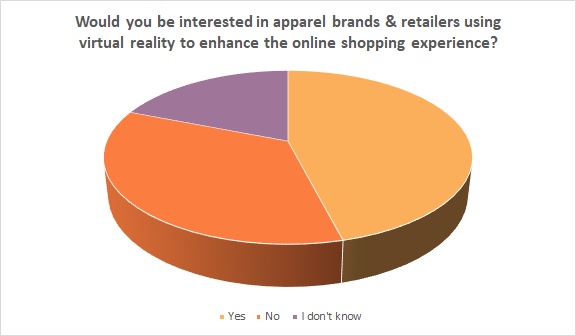Way back in the 1992 in his book Snow Crash, author Neal Stephenson coined the word “Metaverse,” a space he saw as a successor to the internet and a virtual reality-based version of how the internet would evolve. Users gained access to this metaverse by wearing personal goggles. Today, anyone watching a gamer on a VR headset would surely marvel that a work of fiction has become reality — to a certain extent. See, a true shopping metaverse isn’t yet available to consumers. But industry experts say brands and retailers need to prepare for what’s definitely coming.
The winning digital business in the next period is going to be the one that earns the direct trusted access to the end user’s wallet and that will play out differently for retailers, wholesalers and product manufacturers. There’s going to be a really interesting competition frontier as to who provides the wallet infrastructure, what kind of experiences, access or value loyalty point programs etc., are created.
David Treat, Accenture, Senior Managing Director, Blockchain and Multiparty Systems Global Lead
Creative Content Work’s Vlad Mulhem, technology and innovation director, referenced Snow Crash in a recent webinar where he talked about the importance of brands’ understanding and embracing the metaverse as part of retail’s future.
“Just as TV didn’t replace radio, and the internet didn’t replace TV, the metaverse won’t replace what came before it,” Mulhem says. “But the metaverse will just become another channel, another way to interact with things. Brands need to have a presence and it’s only natural to prepare for that future. So, all your rich media in the form of high quality models, product imagery and videos still have their place alongside shiny new AR (augmented reality) and VR (virtual reality).”
Over one quarter of consumers (28 percent) have used a virtual reality device or application, according to the 2021 Cotton Incorporated Lifestyle Monitor™ Survey. Nearly half of consumers (46 percent) say they would be interested in apparel brands and retailers using virtual reality to enhance the online shopping experience.
Accenture’s David Treat, senior managing director, blockchain and multiparty systems global lead, agrees that the metaverse is in its early days. But he sees adoption happening relatively quickly. He gave an example in a Retail Industry Leaders Association webinar of how a candy wrapper can scale into a full-on digital relationship with a consumer.
“We are going down the path of being able to put a QR code on the inside of the candy wrapper,” Treat says. “When the consumer opens the candy wrapper and scans the QR code, they can download a token into their digital wallet that can then convey an experience, or access to something or have value in and of itself,” Treat explains. “If the customer accepts the product token into their wallet, I have the ability to create a direct relationship with them and this is potentially wildly powerful. Today, we high five each other if we get a 5 percent hit rate on an advertising campaign where we are using AI and machine learning. And we’re doing our best to guess at what the end consumer wants.
“In this notion, the ability to create a direct relationship with the end consumer to earn access to their actual data is going to be deeply transformative,” Treat continues. “The winning digital business in the next period is going to be the one that earns the direct trusted access to the end user’s wallet and that will play out differently for retailers, wholesalers and product manufacturers. There’s going to be a really interesting competition frontier as to who provides the wallet infrastructure, what kind of experiences, access or value loyalty point programs etc., are created.”
Already, 16 percent of consumers say they are likely to buy clothes from a store that offers a virtual assistant that proposes style tips and recommendations based on the shopper’s needs, according to the Monitor™ research.
But earning consumer trust and establishing loyalty in the metaverse won’t be a walk in the park. As it stands, 41 percent of consumers are not willing to let brands and retailers use their online browsing and purchase history to deliver personalized ad content and shopping recommendations, according to Monitor™ research. Interestingly though, nearly half of shoppers ages 13-to-34 (45 percent) are willing to trade off that information.

Even though so many Gen Z and Millennial shoppers are willing to give up their browsing and shopping history, more than three-quarters (78 percent) say personal information privacy is an important aspect of online clothes shopping, according to the 2022 Monitor™ data. Overall, 79 percent of shoppers value their personal information privacy. And that figure jumps to 82 percent among women, as well as shoppers who earn $50,000 or more.
Privacy and trust issues apparently won’t be the only challenges to metaverse retailing. Cam Winstanley, video game expert, took a skeptical view of the metaverse’s ability to offer user-friendly shopping when he took part in RetailX’s Global Ecommerce Report. Besides having trouble simply navigating their way around these virtual worlds, Winstanley cited a University of Minnesota kinesiologist who found when users strapped on VR headsets, “the incidence of motion sickness after only 15 minutes is anywhere from 40 percent to 70 percent.” The symptoms of headache, nausea, dizziness, and fatigue could last up to four hours after gaming. Among regular gamers, the incidence occurred for 15 percent of users, while 40 percent had no symptoms. Winstanley says this suggests regular players learned to get over motion sickness. The question then is: If a casual shopper gets motion sickness their first time or two trying to shop on a VR headset, will they continue to try shopping in the metaverse or will they abandon it altogether?
“Any experience that leaves 10 percent of first-time users feeling dizzy is unlikely to ever achieve mass market appeal,” Winstanley says. “For ecommerce within the metaverse, ubiquitous VR would be a literal headache for businesses. It’s easy for shoppers to browse webstores all night long on a screen, yet all but the most dedicated VR gamer are fatigued by headsets after an hour.”
RetailX’s Paul Skeldon, senior editor, offered a differing opinion within the Global Ecommerce Report, saying consumers don’t need a VR headset to enter virtual worlds. He pointed to Roblox, the online gaming platform, which can be played on a handheld device like an iPad.
“The metaverse is already here and the consumers of tomorrow, our kids, love it,” Skeldon says in the report. “Secondly, the VR tech sitting behind it doesn’t have to be different to the gadgetry any 11-year-old already has. No, Roblox isn’t the pinnacle of VR, nor of the metaverse for that matter, but it’s the start. As the metaverse becomes more refined – and the graphics get better …young consumers keen to spend their pocket money will expect their shopping experiences and other interactions with online entities to be more like Roblox. This will change how we interact with the web, and it will change what we think of as VR, which will become that thing we do on our phones when we want to visit the virtual shopping mall.”
